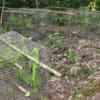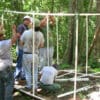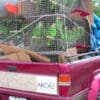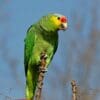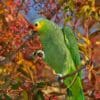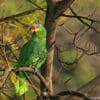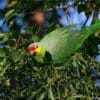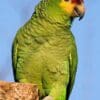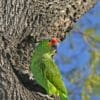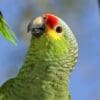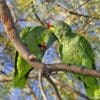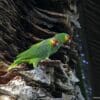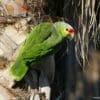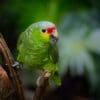Red-lored Amazon
Also known as:
Red-lored Parrot, Scarlet-lored Amazon (Parrot), Red-fronted Amazon (Parrot), Golden-cheeked Amazon (Parrot), Primrose-cheeked Amazon (Parrot); Salvin's Amazon (A.a. salvini)
Also known as:
Red-lored Parrot, Scarlet-lored Amazon (Parrot), Red-fronted Amazon (Parrot), Golden-cheeked Amazon (Parrot), Primrose-cheeked Amazon (Parrot); Salvin's Amazon (A.a. salvini)

Amazona

autumnalis
Size:
34 cm (13.2 in)
Weight:
314-485 g (11-17 oz)
Subspecies including nominate:
two: A.a. autumnalis, A.a. salvini
Colour Adult:
A.a. autumnalis: Both adults in general green, with black edging to feathers of crown to mantle and breast; red forehead and lores: green crown to nape, becoming mauve/blue towards tips and edged with black; yellow upper cheeks to ear coverts; secondaries 1-5 red at bases, the remainder green; green tail. Beak grey with yellow/horn at base of upper mandible. Eye ring white, eye orange.
A.a. salvini: Both adults as in autumnalis, but upper cheeks to ear coverts yellow/green with yellow diminished or absent; side tail feathers red at bases. Eye ring pale yellow.
Colour Juvenile:
A.a. autumnalis: Duller than adults; diminished red on forehead and lores; upper cheeks to ear coverts mixed with green and yellow. Eye brown.
Call:
Various sounds, some high-pitched, trilling; other calls loud, metallic and scolding; rippling and short notes also heard.
More Information:
Content Sources:
CITES
BirdLife International
Cornell Lab of Ornithology/Birds of the World
Parrots: A Guide to Parrots of the World, Juniper and Parr, 1998
Parrots of the World, Forshaw and Cooper, 1989. 2010 edition
Parrots of the World, Forshaw, 2006.
Parrots in Aviculture, Low, 1992.
Psittacine Aviculture, Schubot, Clubb and Clubb, 1992.
Captive Status:
Common in the US, salvini less so.
Longevity:
Up to 75 yrs.
Housing:
Aviary or suspended cage with a minimum length 3 m (9.8 ft).
Diet:
Fruit such as: apple, pear, orange, banana, cactus fruits, pomegranate, forming about 30 % of the diet; fresh vegetables such as: carrot, celery, green peas, beans, fresh corn, green leaves; spray millet and limited mixed seed, cooked beans and pulses, complete kibble.
Enrichment:
Enjoys bathing so provide overhead misters or shallow water bowls; foot toys, destructible (non-toxic) toys, non-destructible (non-toxic plastic) toys, food-finder toys, preening toys, different texture and size hanging perch toys, fir, pine, willow or elder branches, push-and-pull toys (sliding up and down), vegetable tanned leather toys.
Nest Box Size:
Vertical box, 12″ x 12″ x 24″ (30.5 cm x 30.5 cm x 61 cm).
Clutch Size:
3
Fledging Age:
8-9 weeks
Hatch Weight:
—
Peak Weight:
—
Weaning Weight:
—
World Population:
Unknown, decreasing.
IUCN Red List Status:
Least Concern
CITES Listing:
Appendix II
Threat Summary:
Relatively common except in NE Mexico and NW Venezuela; affected by heavy trapping for trade and habitat loss in Mexico and W Venezuela.
Range:
A.a. autumnalis: Mexico to Honduras including Bay Islands.
A.a salvini: Honduras or Nicaragua to SW Colombia and NW Venezuela.
Habitat:
Lives in a range of habitats, woodland, open areas with trees, mangroves, wooded swamps, gallery forest, cultivated areas, plantations. Mainly below 800m (2624 ft).
Wild Diet:
Palm fruits such as Cordia lutea, and Spondias pourpurea, Cymbopetalum mayanum, Bursera simaruba, Erythrina poeppigiana and Minquartia, seeds of Stemmadenia donnell-smithii, Virola, Casearia and Protium, figs , ripening legume seeds, leaf buds and some cultivated fruit including mangoes, citrus and coffee beans (Coffea arabica).
Ecology and Behaviour:
Nomadic, birds move from rainforest in breeding season to open areas in winter. Found in loose flocks or in pairs, are gregarious when feeding (often found with macaws). Roost in tall trees in gallery forest or mangroves; 800 birds reported at one site.
Clutch and Egg Size:
3 rounded eggs, 37.5 x 30.5 mm (1.5 x 1.2 in).
Breeding Season:
Birds in breeding condition April, Oaxaca; February-March, Belize; March, Guatemala; January-February, Colombia; breed February-April Panama; March-May, Belize and January-March, Ecuador. Nest is in cavity in tall usually dead tree.
Related Links:
—
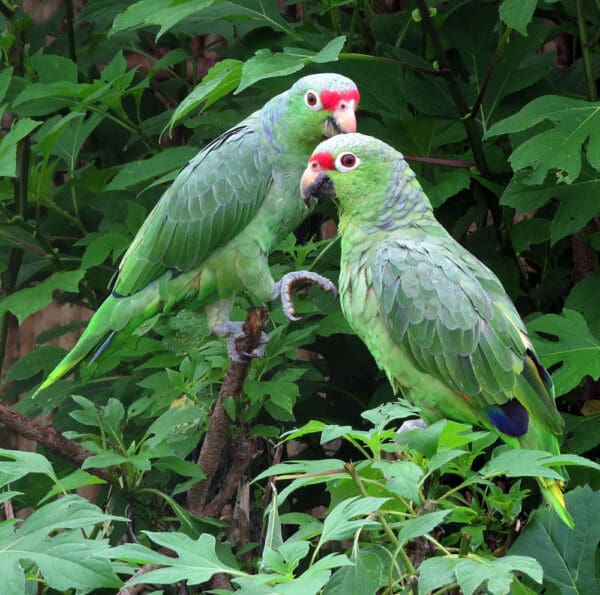
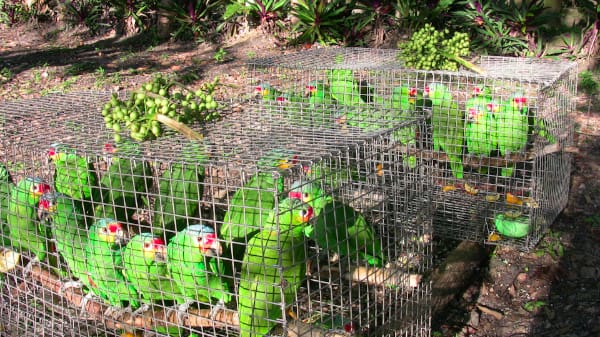
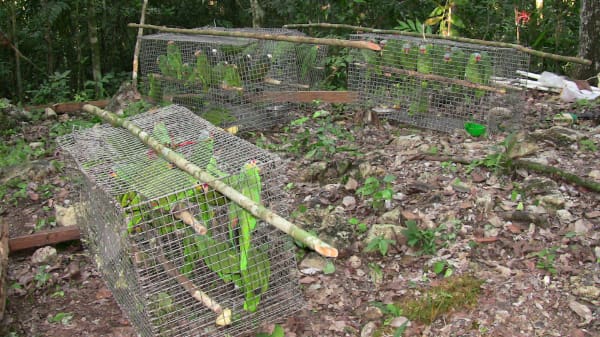
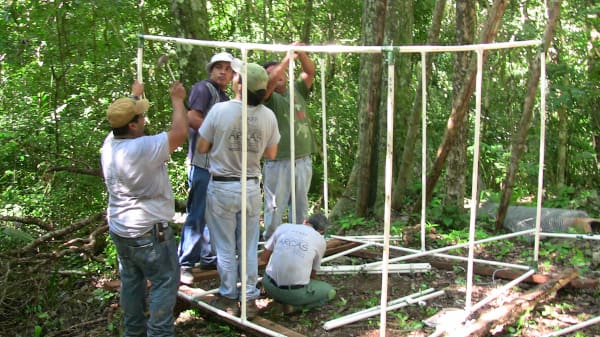
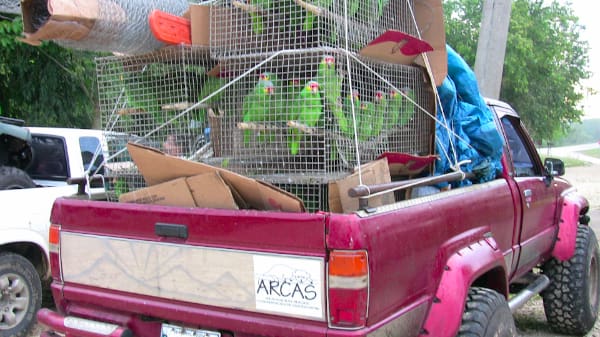
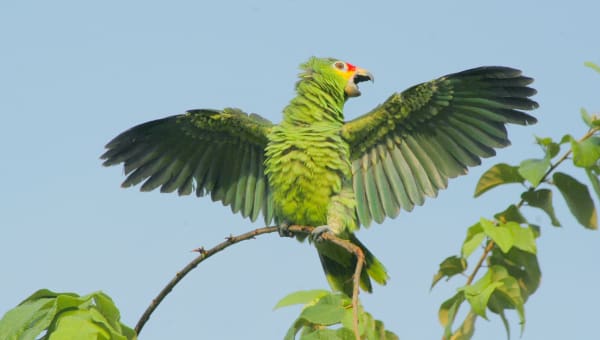
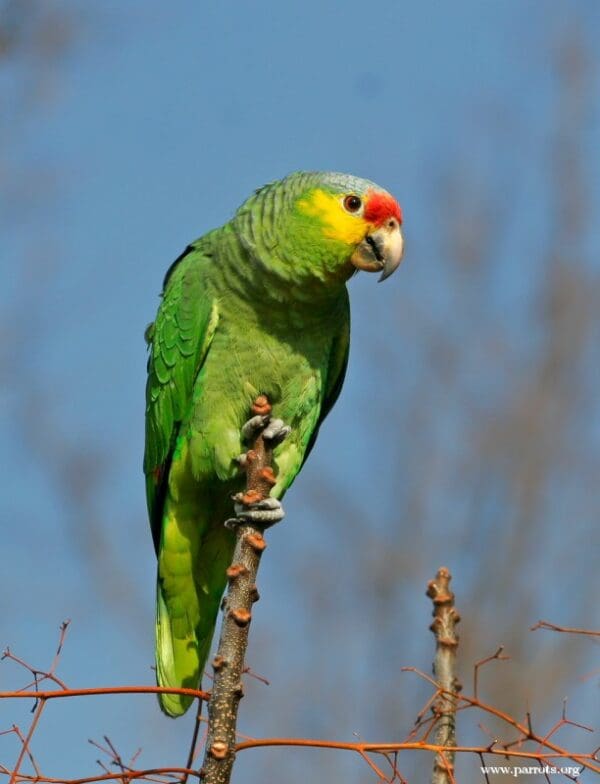
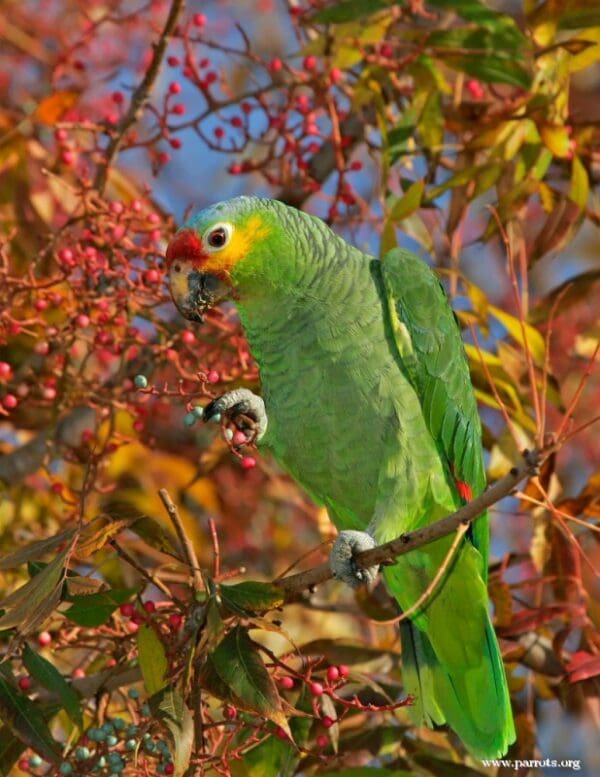
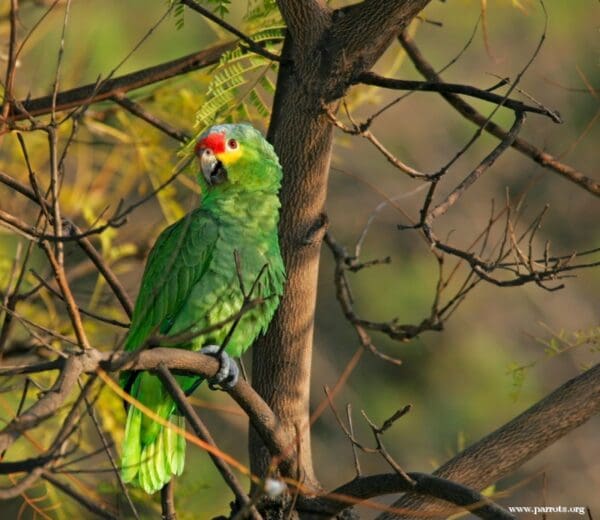
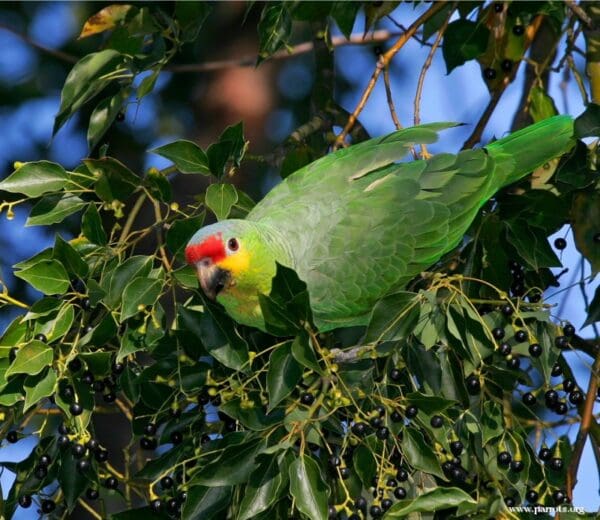
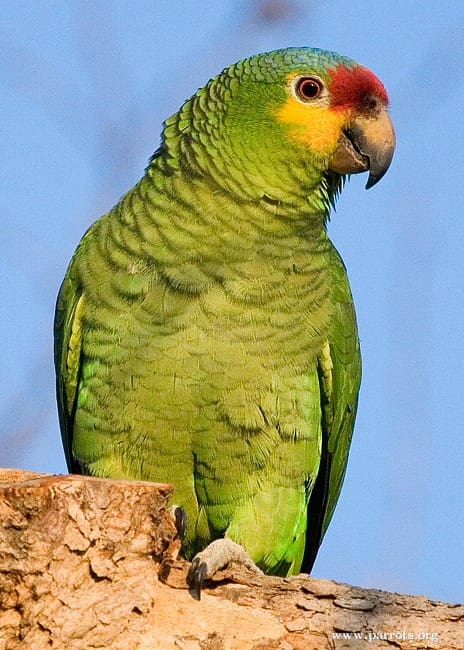
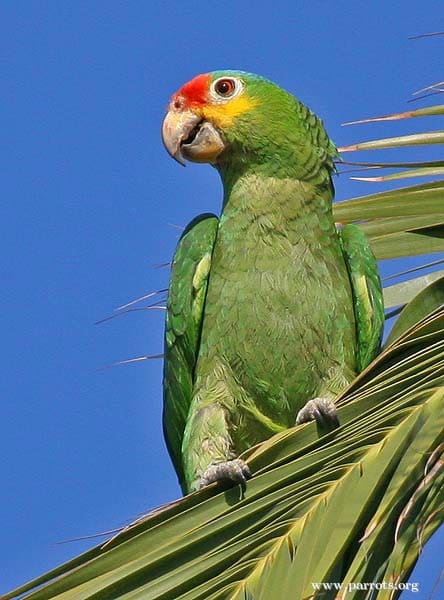
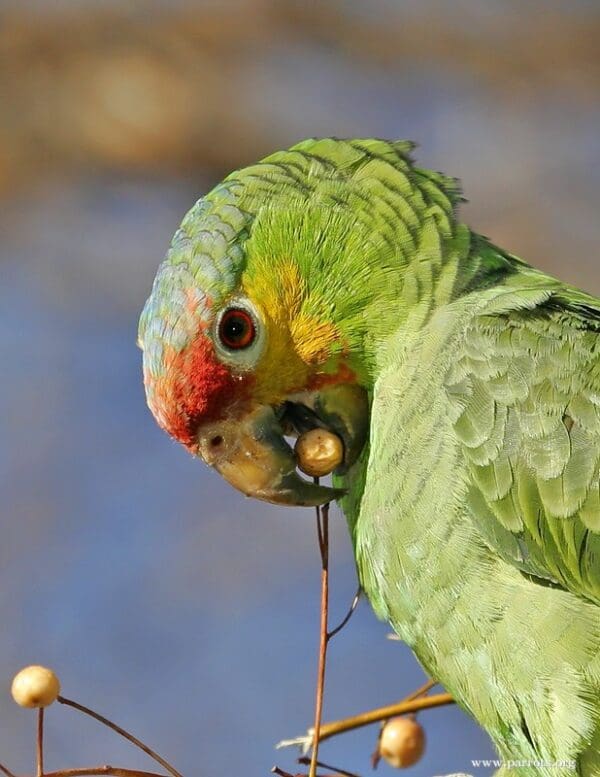
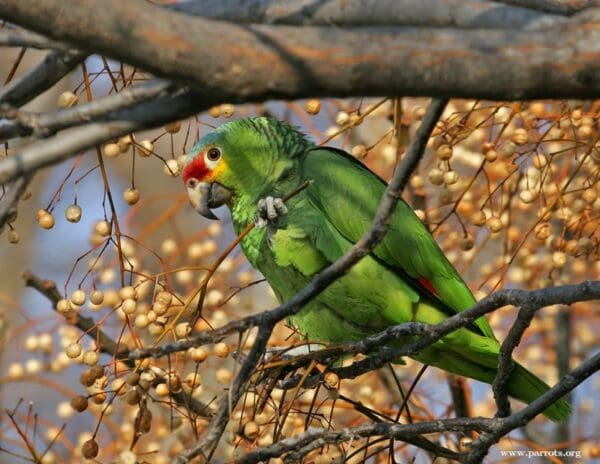
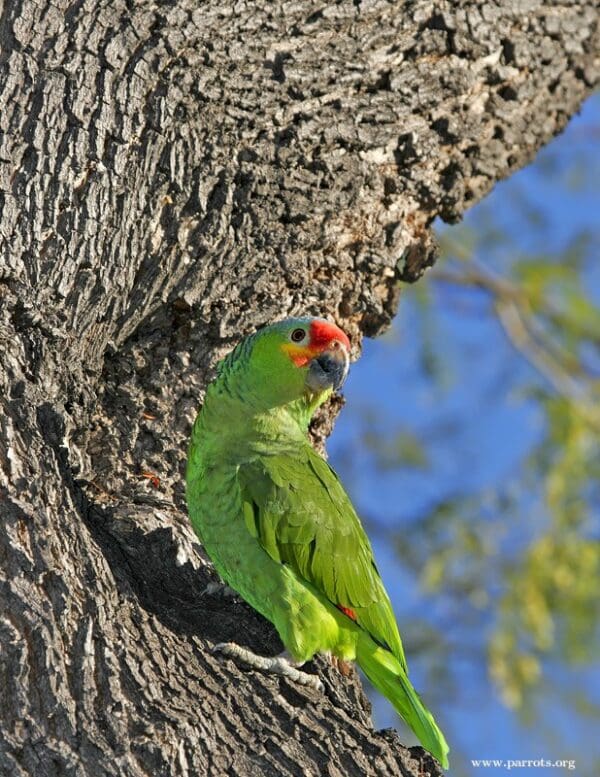
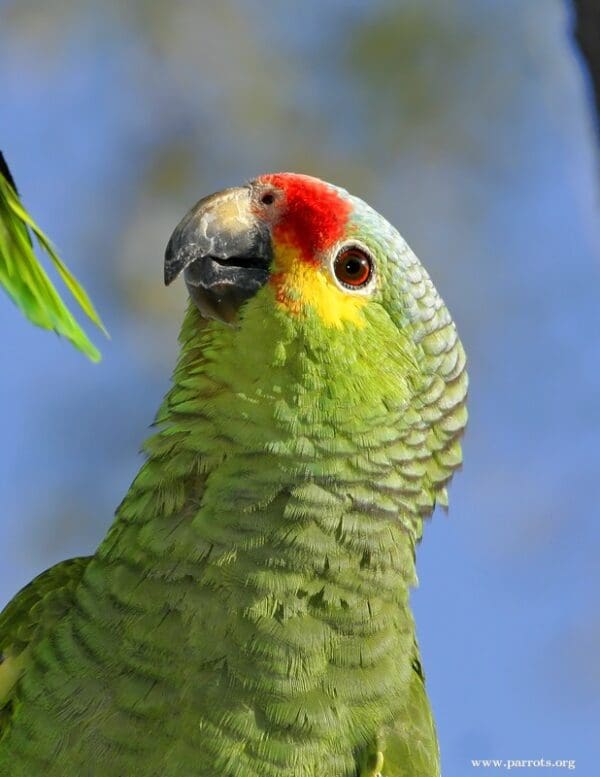

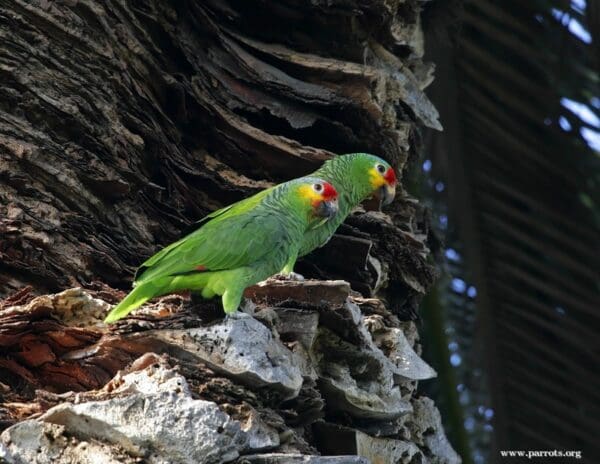
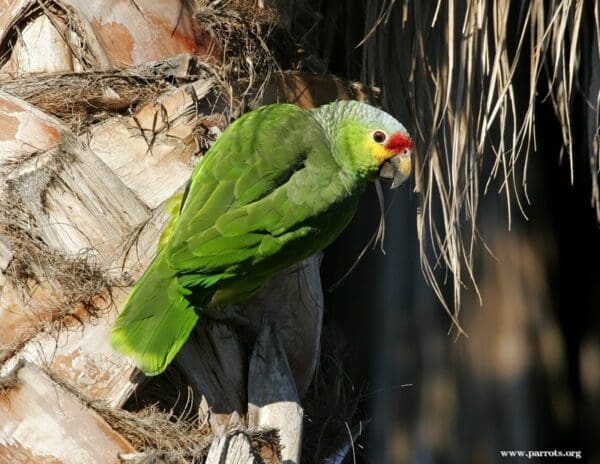
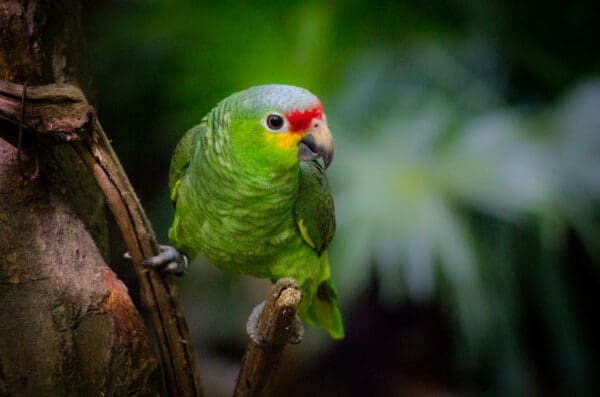
![© Dick Culbert [CC BY 2.0] via Wikimedia Commons Wild Red-lored Amazons, ssp salvini, perch in a tree](https://parrots.org/wp-content/uploads/1990/10/Red-lored-Amazon-lg-Dick-Culbert-100x100.jpg)

